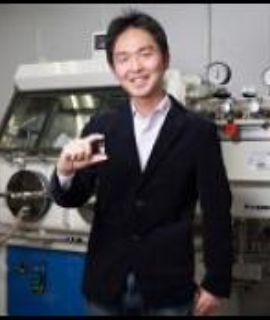Title : Photocatalytic hydrogen evolution from water splitting over mixed valence tin oxide semiconductor under visible light irradiation
Abstract:
Water splitting using a particle photocatalyst with visible light has attracted interest, because this will realize efficient conversion of the solar energy to hydrogen fuels for sustainable energy managements. Many water-splitting photocatalysts, such as metal-doped oxides, metal-(oxy)nitrides, and metal-oxysulfides, exhibit water reduction and oxidation ability when absorbing visible light. However, in such water-splitting photocatalysts, solely doping and/or replacement of foreign element at host material has been attempted to prepare visible-light-driven photocatalysts. The doping and/or replacement induces defect sites and charge imbalance into photocatalyst, resulting in the formation of recombination centers between excited electron and holes, in return to create new valence state. Therefore, the development of new native visible-light-sensitive photocatalyst for water splitting without doping of foreign elements is a major challenge for photocatalyst research.
Herein, we report that an undoped metal oxide, Sn3O4, can efficiently catalyze Hydrogen (H2)-evolution in the presence of a sacrifice agent and, furthermore, can split water to H2 and O2 under irradiation of visible light by two-step photoexcitation (Z-scheme) systems using Sn3O4 as H2-evolving photocatalyst, combined with an appropriate O2-evolving photocatalyst in the presence of iodate/iodide (IO3−/I−) as an electron mediator.
We prepared nanocrystals of Sn3O4 by hydrothermal synthesis using sodium citrate as a ligand [1,2]. The Sn3O4 significantly catalyzed hydrogen evolution in aqueous solution in the presence of sacrifice agent under irradiation of visible light (λ>420nm), even without Pt co-catalyst (Figure 1). Pt co-catalyst was critical for Sn3O4 material to exhibit higher photocatalytic activity, so far in this study. The apparent quantum yield was 0.2% for high purity Sn3O4 and 1.5% for Pt loaded-Sn3O4, competitive to that of visible-light-sensitive doped metal oxide and (oxy)nitrides photocatalyst. Simultaneous evolution of H2 and O2 was attempted by using Sn3O4 as H2-evolving photocatalyst, combined with an appropriate O2-evolving photocatalyst (BiVO4, WO3 etc.,). By employing the appropriate combination of Sn3O4 and the redox couple (IO3−/I−), simultaneous evolution of H2 and O2 stably proceeded with higher rates.
Audience Take away:
- Hydrogen will play an important role in clean energy system because it is an ultimate clean energy and it can be used in fuel cells.
- Water splitting using a particle photocatalyst will realize efficient conversion of the solar energy to hydrogen fuels for sustainable energy managements.
- An oxide of abundantly available and environmentally non-toxic tin, Sn3O4, can efficiently catalyze the targeted water splitting in aqueous solution under irradiation of visible light.



